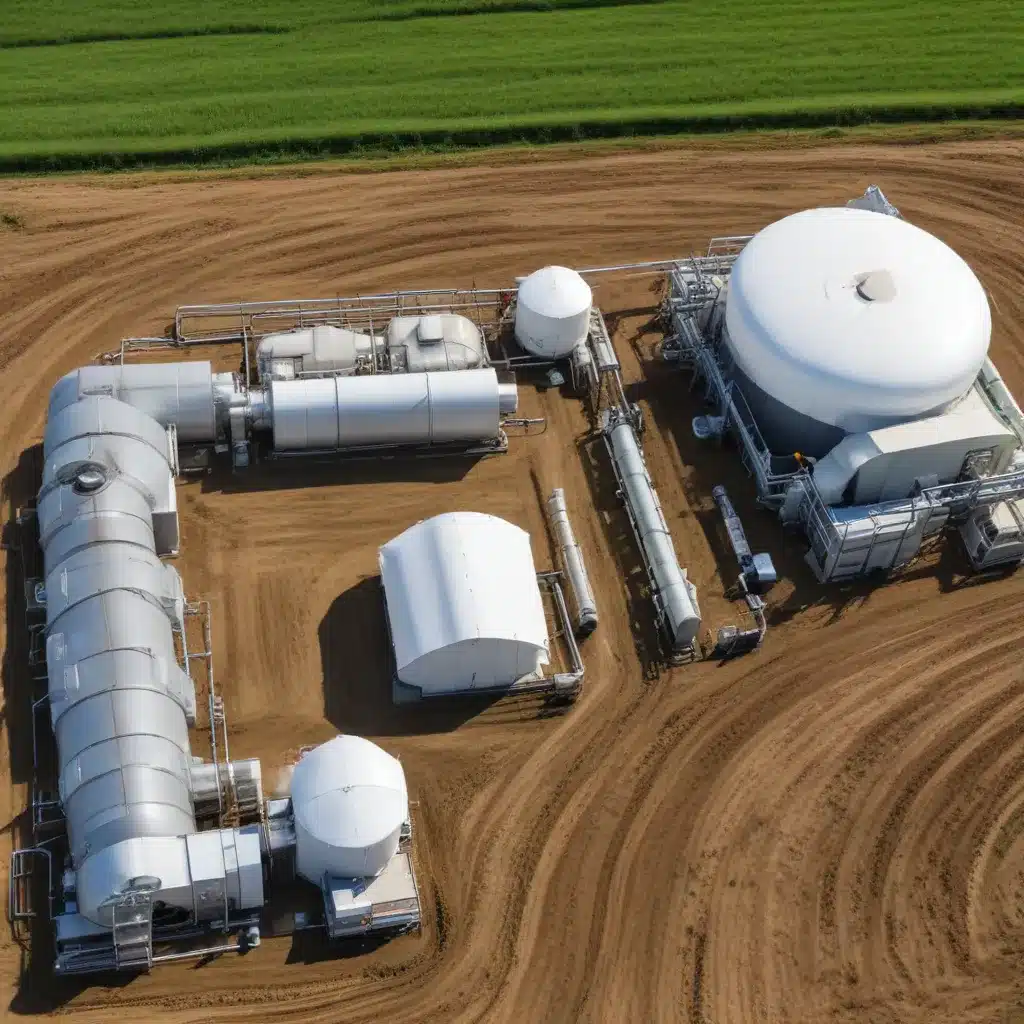
The transition towards a sustainable energy future is a pressing challenge for Europe, and one key solution lies in the harnessing of biogas and biomethane. These renewable energy sources, produced through the anaerobic digestion of organic waste, offer a promising path to reducing greenhouse gas emissions, managing waste effectively, and diversifying the energy mix.
Anaerobic Digestion: Harnessing Renewable Energy
At the heart of biogas and biomethane production is the process of anaerobic digestion. In this oxygen-free environment, specialized microorganisms break down organic materials, such as agricultural waste, food scraps, and sewage sludge, and convert them into a methane-rich biogas. This biogas can then be further refined and upgraded into biomethane, a renewable natural gas that is compatible with existing infrastructure and can be injected directly into the grid.
Fundamentals of Anaerobic Digestion
The anaerobic digestion process involves a series of complex microbial reactions, where different bacteria work in concert to degrade the organic matter. This multistep process begins with the hydrolysis of complex polymers, followed by the fermentation of the resulting monomers, and culminates in the methanogenesis stage, where methane-producing archaea convert the intermediate products into biogas.
Key Substrates and Feedstocks
The feedstocks that can be utilized in anaerobic digestion are diverse, ranging from agricultural residues and livestock manure to food waste and municipal sewage sludge. The choice of feedstock can significantly impact the biogas yield and composition, with some materials, such as fats, oils, and greases, being more readily digestible than others, like lignocellulosic crop residues. Co-digestion, or the blending of multiple organic waste streams, can help optimize biogas production and enhance the overall efficiency of the process.
Anaerobic Digestion Reactor Designs
Anaerobic digesters come in various configurations, each tailored to specific feedstock characteristics and operational requirements. Commonly used designs include continuously stirred tank reactors, plug-flow digesters, and upflow anaerobic sludge blanket reactors. Advances in reactor engineering, including the incorporation of pretreatment techniques and process control systems, have led to improvements in biogas yield and process stability.
Biogas Production and Composition
The biogas generated through anaerobic digestion typically contains 50-70% methane, 30-40% carbon dioxide, and trace amounts of other gases, such as hydrogen sulfide and water vapor. The precise composition of the biogas depends on factors like the feedstock, digester design, and operating conditions.
Microbial Pathways in Biogas Generation
The complex microbial interactions within the anaerobic digestion process are crucial in determining the quantity and quality of the biogas produced. Different groups of microorganisms, including hydrolytic, acidogenic, acetogenic, and methanogenic bacteria, work in a synergistic manner to convert the organic matter into methane and carbon dioxide.
Factors Influencing Biogas Yield
The biogas yield is influenced by a variety of parameters, including temperature, pH, hydraulic retention time, organic loading rate, and the presence of inhibitors or toxins. Optimizing these factors through careful monitoring and process control can help maximize the methane production potential of the anaerobic digestion system.
Biogas Purification and Upgrading
To meet the standards for injection into natural gas grids or use as a transportation fuel, the raw biogas must undergo a purification and upgrading process. This typically involves the removal of impurities, such as carbon dioxide, hydrogen sulfide, and moisture, using techniques like pressure swing adsorption, water scrubbing, or membrane filtration. The resulting biomethane can then be compressed or liquefied for distribution and end-use applications.
Biomethane Applications and Utilization
The versatility of biomethane opens up a wide range of applications, from transportation fuels to grid-injected renewable natural gas, contributing to the diversification of Europe’s energy landscape.
Biomethane as a Transportation Fuel
Biomethane can be used as a clean, low-emission transportation fuel, either in the form of compressed natural gas (CNG) or liquefied natural gas (LNG). The use of biomethane-powered vehicles, particularly in fleet operations, can significantly reduce greenhouse gas emissions and fossil fuel dependency.
Biomethane Injection into Natural Gas Grids
By upgrading biogas to biomethane, the renewable gas can be seamlessly integrated into the existing natural gas infrastructure, effectively decarbonizing the natural gas supply. This integration helps to enhance the sustainability of the overall energy system and contributes to Europe’s climate goals.
Cogeneration and Combined Heat and Power
Biogas can also be utilized for combined heat and power (CHP) applications, where the methane is combusted to generate both electricity and usable thermal energy. This combined approach can significantly improve the overall efficiency of the biogas system and reduce the reliance on fossil fuels for heating and power.
Technological Innovations in Anaerobic Digestion
Continuous advancements in anaerobic digestion technologies are driving efficiency, scalability, and sustainability in the production of biogas and biomethane.
Pretreatment and Substrate Preparation
Innovative pretreatment methods, such as mechanical, thermal, or chemical pretreatment, can help enhance the biodegradability of recalcitrant feedstocks, like lignocellulosic materials, thereby improving biogas yields.
Advances in Digester Monitoring and Control
The integration of sophisticated monitoring and control systems, including sensor technologies and data analytics, enables real-time optimization of the anaerobic digestion process, leading to enhanced stability, increased biogas production, and improved process reliability.
Coupling Anaerobic Digestion with other Technologies
Researchers are exploring the integration of anaerobic digestion with other emerging technologies, such as microbial electrochemical systems and algal cultivation, to create hybrid solutions that can further improve the overall efficiency and environmental benefits of biogas and biomethane production.
As Europe continues its transition towards a sustainable energy future, the harnessing of biogas and biomethane through innovative anaerobic digestion and upgrading technologies holds immense promise. By leveraging the diverse feedstock options, optimizing the production processes, and exploring novel applications, the biogas and biomethane industry can play a crucial role in diversifying the energy mix, reducing greenhouse gas emissions, and creating a more resilient and sustainable energy landscape across the continent. The European Future Energy Forum remains at the forefront of these advancements, fostering collaboration, knowledge exchange, and the implementation of cutting-edge solutions in the renewable energy sector.







